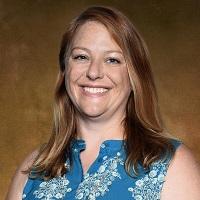Day in the Life of an Emergency NP: Two Experts Share Their Perspectives
Find NP Schools
For the 2023-2024 academic year, we have 140 NP schools in our database and those that advertise with us are labeled “sponsor”. When you click on a sponsoring school or program, or fill out a form to request information from a sponsoring school, we may earn a commission. View our advertising disclosure for more details.
“I often tell my students that you are meeting patients on what’s likely one of the worst days of their life, and you get the chance to make a difference. I think that’s what keeps most of us coming back.”
Dr. Jennifer Wilbeck, Professor of Nursing and Emergency NP Academic Director at Vanderbilt University School of Nursing
Even in non-pandemic conditions, emergency departments (EDs) in the United States receive nearly 150 million visits per year. Emergency nurse practitioners (ENPs) are a key part of the interdisciplinary care team that quickly assesses, diagnoses, and treats the patients who make those ED visits.
This is a fast-paced, wide-ranging job; according to data from the American Association of Nurse Practitioners (AANP), ENPs see an average of 22 patients per day, each of whom may have a different level of acuity and a different symptom set—from broken bones to indigestion to cardiac arrest.
Not all ED visits are due to life-threatening emergencies. A report from the Department of Health and Human Services (HHS) found that individuals seek care in the ED for a wide variety of reasons, including problems related to patients accessing traditional healthcare services or difficulty in patients being able to determine whether or not a symptom such as chest pain is truly severe.
Part of the ENP role, therefore, isn’t simply treating the most urgent cases but helping to ascertain which cases are urgent, and which are not. It also means that an ENP needs to be able to provide care across many different areas, including primary care, women’s health, pediatric care, and acute care.
NPs have been providing care in the ED since the 1970s, but the ENP has only coalesced into its own, unique specialty in recent years. The pace of growth is increasing: the American Association of Emergency Nurse Practitioners (AAENP) was established in 2014, and there are now clear-cut educational pathways to board certification for ENPs.
The Covid-19 pandemic has further highlighted the need for more expert emergency care providers, and ENPs will have a major role to play both now and in the coming post-pandemic years.
To learn more about the ENP specialty, and where it’s going, read on.
Meet the Emergency Nurse Practitioner Experts

Jennifer Wilbeck, DNP, APRN, FAAN, FAANP
Dr. Jennifer Wilbeck is a Professor of Nursing at Vanderbilt University School of Nursing, where she is also the Emergency NP Academic Director. She has over 20 years of experience in emergency healthcare, including pre-hospital, emergency department, critical care access, and trauma care.
At Vanderbilt, Dr. Wilbeck’s leadership of the nation’s first dual NP academic program for ENP preparation continues to serve as a model for ENP educational programs. She has also led the development of national practice standards and the creation of a national ENP specialty certification board examination.
Dr. Wilbeck was the founding Board Chair for the first national specialty professional organization for ENP practice, the American Academy of Emergency Nurse Practitioners AAENP), where she now serves as Executive Director.

Erica May, DNP, ENP, FNP, AG-ACNP
Dr. Erica May is an Emergency Nurse Practitioner in Middle Tennessee and an Instructor of Nursing in the Emergency Nurse Practitioner Program at Vanderbilt University School of Nursing. Dr. May is a graduate of Vanderbilt herself, having obtained both her MSN and DNP from the institution.
Certified as a Family, Acute Care, and Emergency Nurse Practitioner, Dr. May sees patients across the life span in a community emergency department, providing care to patients and their families.
Having seen the devastating effects of the opioid crisis, Dr. May is keenly interested in alternatives to opioid pain management in the emergency department. A love of the outdoors also drives her interest in wilderness and austere medicine. She is a member of the Wilderness Medical Society and volunteers with the Tennessee Scenic Rivers Association to teach safety and rescue skills to recreational boaters.
The Role of the Emergency NP
“The diversity of patient encounters is what drew me to the field,” Dr. Wilbeck says. “The task switching you have to perform is very unique in the ED. You can go from something that has a pretty benign presentation to something that’s very acute and life-threatening, and you have to bounce back and forth between the two with each patient encounter.”
In assessing, diagnosing, and treating patients, ENPs can provide a wide range of healthcare services. Unlike an acute care nurse practitioner (ACNP), ENPs are typically seeing patients with undifferentiated diagnoses, for a brief period of time (rather than for ongoing care provided by ACNPs), and those patients can be either children or adults.
“In a lot of ways, my days as an ENP are not typical,” Dr. May says. “Patient volume, meaning how many patients come into the ED, and acuity, meaning how sick they are, change from day to day and season to season. But within every shift that I work, the constant is that I know I have a really solid team of physicians, nurses, and techs working with me.”
The interprofessional teams of emergency departments require an elegant choreography and delineation of duties between RNs, ENPs, physicians, and technicians. Typically, an RN will initially assess new patients and triage them based on their acuity. From there, the ENP will collaborate with the RN, perform their own assessment, order tests and/or medications, interpret test results, and identify a diagnosis and treatment plan. ENPs often perform diagnostic or therapeutic procedures as well.
Physician collaboration is dependent upon patient complexity, and state and facility regulations. After the ENP writes up their disposition plan and discharge instructions, the RN or an ER tech will discharge the patient. In a collaborative environment such as this, communication, teamwork, patience, and flexibility are critical skills for the ENP.
“I haven’t had a slow, boring day in a long time,” Dr. May says with a laugh. “The environment in the emergency room is so mercurial. You never know what’s going to happen, and your priorities are always going to be shifting depending on what’s coming through the door next.”
The Growth of the ENP Specialty
As the role of the ENP emerged, direct educational pathways dedicated to the ENP specialty were nearly nonexistent. Students would instead complete family nurse practitioner (FNP) or acute care nurse practitioner (ACNP) programs, but neither was a perfect match for the ENP role.
The first master’s level ENP program began at the University of Texas at Houston School of Nursing in 1994. At Vanderbilt in 2006, Dr. Wilbeck started the first ENP program that offered broad education for ENP practice and included both family and acute care NP preparation.
“When you look at ENP practice, there are things an ENP does in their day-to-day role that don’t fit within an FNP or ACNP program,” Dr. Wilbeck says. “Recognizing that, we started a program that would directly prepare students to become ENPs.”
The ENP program at Vanderbilt now offers a streamlined path towards board certification and acts as a template for ENP programs at other institutions. But there’s still a lot of ground to make up across the profession: there are approximately 17,000 NPs working in emergency departments today, but only an estimated 2,000 are board-certified as ENPs.
“The ENP role, and especially its certification, is still relatively new,” Dr. Wilbeck says. “So gaining the recognition of this specialty by state boards of nursing and third-party insurers has been challenging in some areas. It’s something we at AAENP are working towards as we continue to support ENPs across the country.”
To advance the profession, AAENP has published standards, competencies, and scopes of practice for ENPs. And, more recently, they’ve published a core curriculum for ENP programs. AAENP is now engaging with national stakeholders, holding listening sessions, and bolstering the recognition of the work that ENPs do. Dr. Wilbeck expects big changes to follow in the next year or two.
“The future is bright,” Dr. Wilbeck says. “I anticipate that there will be the continued evolution of the ENP role, that it will continue to grow, and that the ENP will be recognized as an integral part of the emergency care team. Our value has been proven over and over.”
The Future for Emergency NPs
The Covid-19 pandemic overburdened all of the nation’s emergency departments and the crisis isn’t over yet. But already there have been some lessons learned, and innovations in practice that will carry over into a post-pandemic world. One accelerated trend has been the movement of emergency care outside of the emergency department setting.
“There was already a push, prior to the pandemic, to move some of the emergency care to outside of hospital walls,” Dr. Wilbeck says. “But the shift in where care occurs has expanded during the pandemic. ENPs have been on helicopters, they’ve been riding in the back of ambulances, and they’ve been providing home care services. We’re trying to take care of individuals and keep them out of the ED when that’s appropriate.”
It’s not just where emergency care occurs that’s changing; how care is delivered is changing, too. The opioid crisis has all healthcare professionals, including ENPs, rethinking the ways in which pain is treated.
“There’s more research coming out now on alternative modalities that can be used to help patients deal with acute pain, and a lot of it is applicable to the emergency department,” Dr. May says. “It’s a very exciting time to be an ENP, and to be on the forefront of figuring out how we can better treat our patients in our communities by providing them with the care that they need without introducing opioids.”
This is a specialty that’s evolving at a rapid pace, one that matches the pace of the day-to-day in America’s emergency departments. As emergency care continues to grow and change, ENPs will play a critical role in shaping its future.
“I often tell my students that you are meeting many of these patients on what’s likely one of the worst days of their life,” Dr. Wilbeck says. “And you get the chance to make a difference. I think that’s what keeps most of us coming back.”
“The best part of working as an ENP is just making someone feel better, and feeling like you had a positive impact on a patient or their family,” Dr. May says. “I’m biased, but I think it’s a great job. It’s challenging every day in the best possible ways, and I love it.”
Resources for Emergency NPs
To learn more about the role of the ENP today, and where it’s going, check out some of the resources below.
- American Academy of Emergency Nurse Practitioners (AAENP): Established in 2014, AAENP promotes evidence-based practice for NPs providing emergency care for patients of all ages and acuities in collaboration with an interdisciplinary team.
- Advanced Emergency Nursing Journal (AENJ): AENJ is a peer-reviewed journal designed to meet the needs of advanced practice clinicians, clinical nurse specialists, nurse practitioners, healthcare professionals, and clinical and academic educators in emergency nursing.
- American Association of Nurse Practitioners (AANP): With over 118,000 members, AANP is the leading voice of the nurse practitioner profession and a powerful advocate for both NPs and their patients. You can find their emergency NP specialty practice group (SPG) here.
- National Organization for Nurse Practitioner Faculties (NONPF): The only organization specifically dedicated to promoting high-quality NP education, NONPF represents a global network of NP educators and has a special interest group (SIG) dedicated to ENPs.

Matt Zbrog
WriterMatt Zbrog is a writer and researcher from Southern California, and he believes nurse practitioners (NP) are an indispensable component of America’s current and future healthcare workforce. Since 2018, he’s written extensively about the work and advocacy of NPs, with a particular focus on the rapid growth of specialization programs, residencies, fellowships, and professional organizations. As part of an ongoing series on state practice authority, he’s worked with NP leaders, educators, and advocates from across the country to elevate policy discussions that empower NPs. His articles have featured interviews with the leadership of the American Association of Nurse Practitioners (AANP), the National Association of Pediatric Nurse Practitioners (NAPNAP), and many other professional nursing associations.